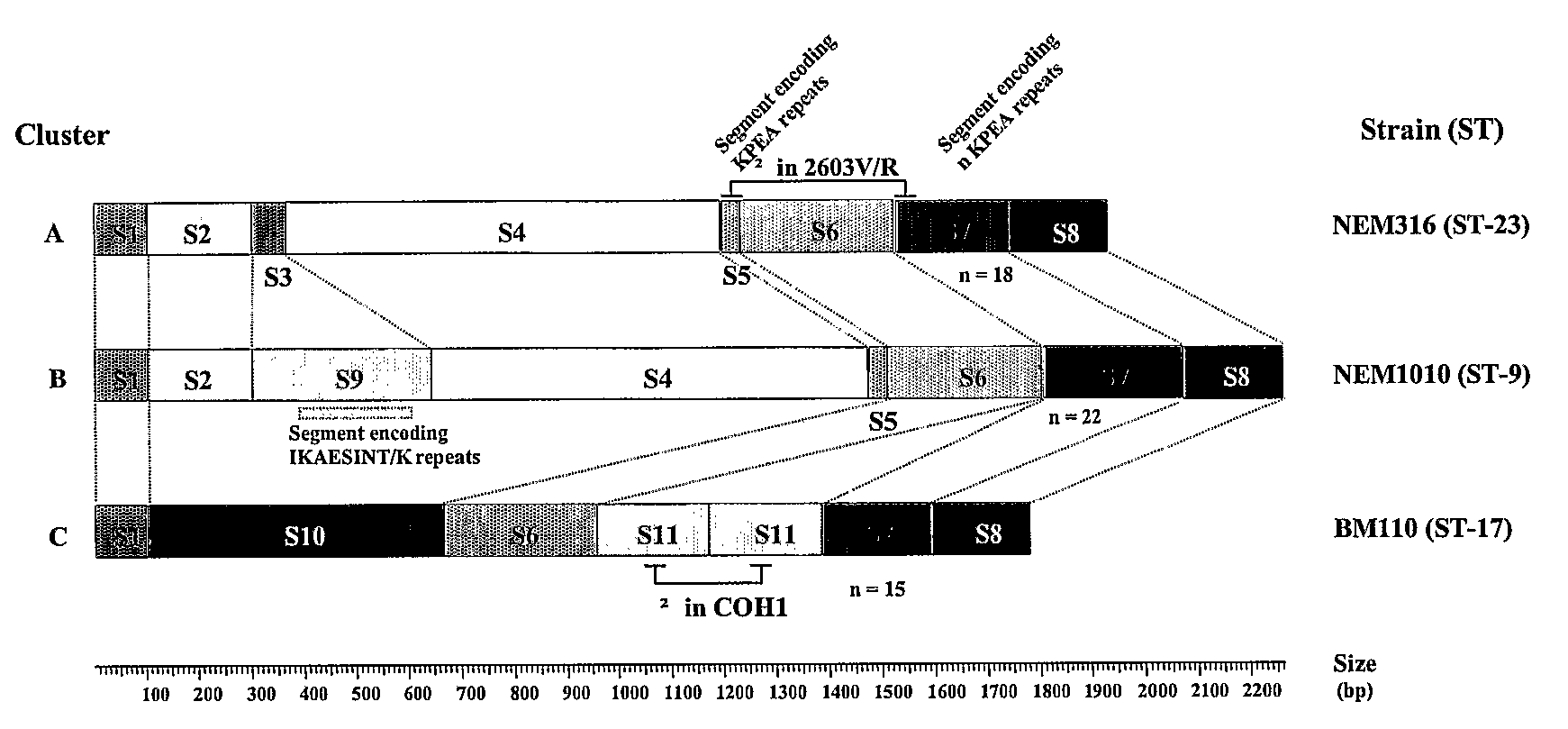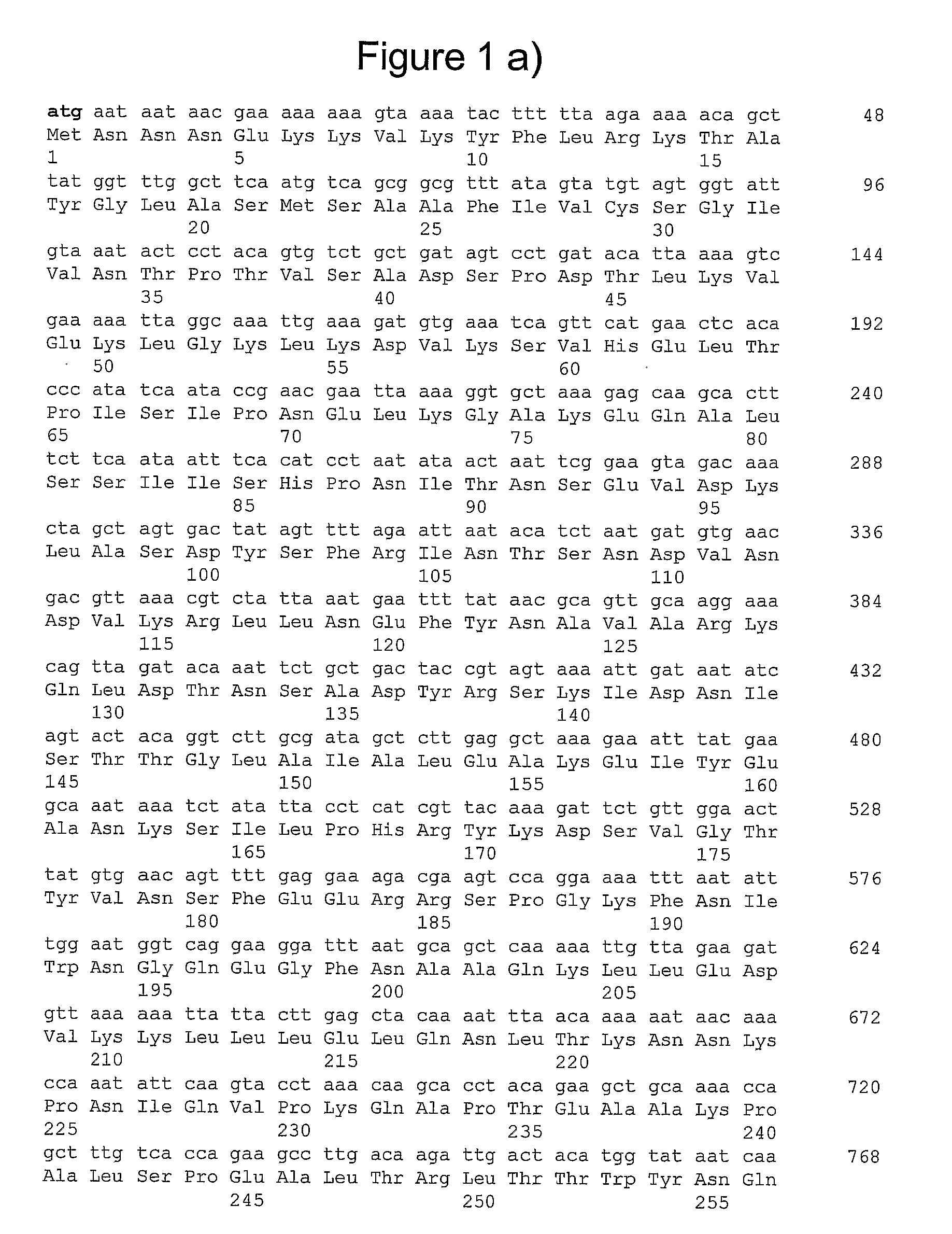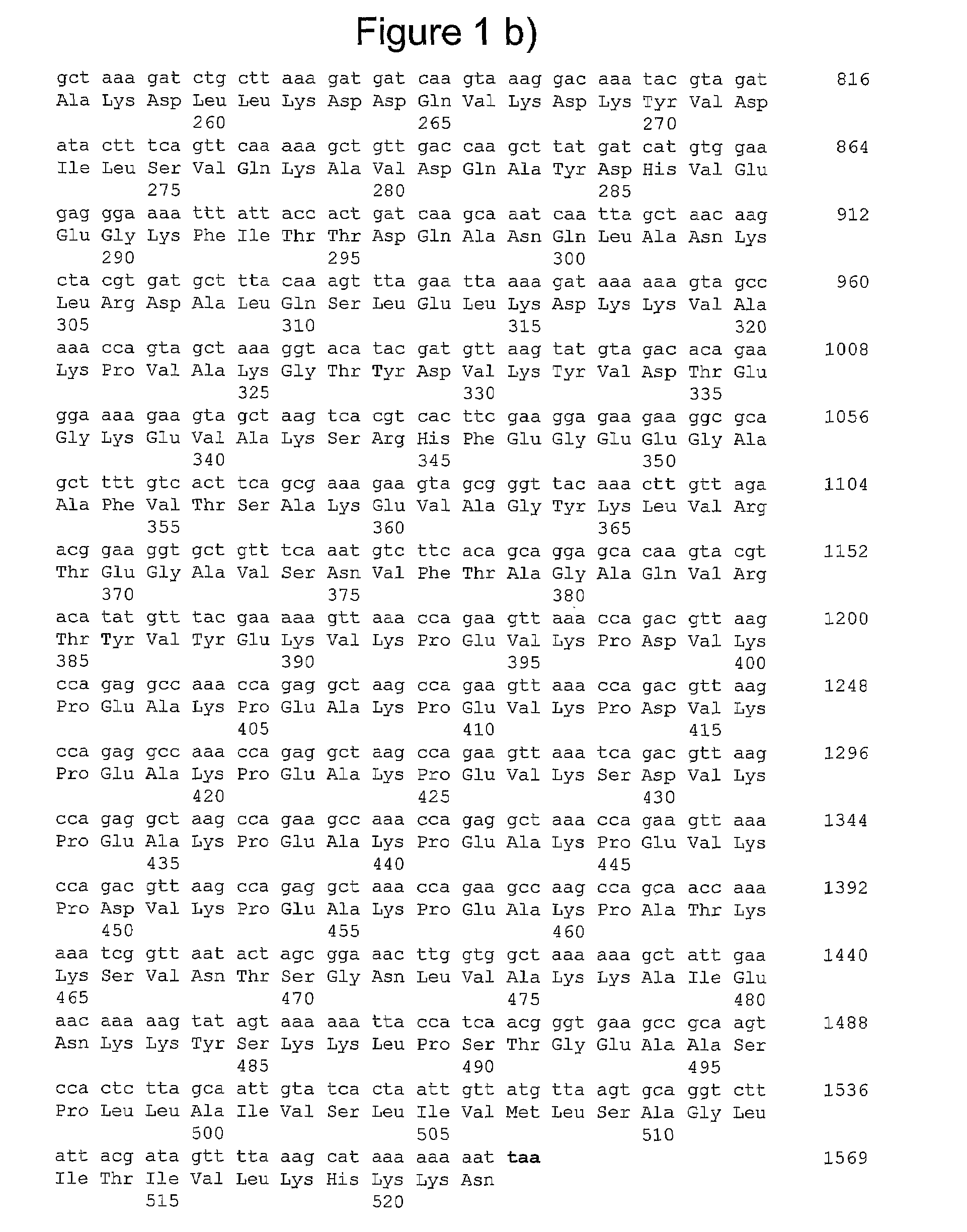Rapid detection of the "high-virulent" st-17 clone of group b streptococcus
a streptococcus, high-virulent technology, applied in the field of polynucleotides, can solve the problems of inability to distinguish the potentially high-virulence clones from the others, severe neurological damage, fastidious techniques, etc., and achieve the effect of rapid and efficient detection of infection
- Summary
- Abstract
- Description
- Claims
- Application Information
AI Technical Summary
Benefits of technology
Problems solved by technology
Method used
Image
Examples
example 1
Identification, Serotyping and DNA Extraction of the GBS Strains
[0214]In order to characterize the genetic diversity of the gbs2018 gene, 181 unrelated GBS strains including the three sequenced strains NEM316 serotype III, 2603V / R serotype V, strain A909 serotype Ib (http: / / www.tigr.org / tdb / mdb / mdbinprogress.html), the partially sequenced serotype III strain COH1 and the well-characterized serotype III strain BM110 were studied.
[0215]As it is detailed in the table 1 presented below, the collection included 155 human strains from various France geographical origins isolated between 1990 and 2005, 8 strains from various UK geographical origins and 13 bovine mastitis strains.
[0216]GBS strain identification was realized using a commercial latex agglutination test (bio Mérieux, Marcy l'Etoile, France), and the strains were serotyped by agglutination using a commercial kit from Essum Corporation (Umea, Sweden). All GBS strains were grown on Columbia agar containing 5% of horse blood at 37...
example 2
Identification and Characterization of gbs2018 Polymorphism
[0220]Extracted DNA was used as a matrix for PCR amplifications. The full-length genes of all allelic forms of gbs2018 were amplified by using primer pair O1-O2 (see table S1 below), respectively located upstream and downstream from the gene.
TABLE S1Oligonuoleotides used in this study.SEQ IDCluster orPrimerNOSequence (5′ to 3′)TargetReferenceO117AAAATAAACGTGGTCCTATCCTgbs2018A, B, CO218GGCAAAGTTCTGATGAGGTTTGgbs2018A, B, CO319GCAGCGTTTGCTGTATGTAGTGGTgbs2018A, BO420CTTGAGAACGTCTTGACTGCgbs2018A, BO521GGTAAGCAGTCAAGACGTTCTCAgbs2018A, BO622AGTTCCCACAGAGTCTGCATgbs2018A, BO723AGCACAGGAAGTTGCCCAGAAAgbs2018A, BO824AGCATCACGTAGCTTGTTAGgbs2018A, B, CO925GTTGACCAAGCTTATGATCATGTGGgbs2018A, B, CO1026TTGCTAAGAGTGGACTTGCGgbs2018A, B, CO1127GGCTTCAATGTCAGCGGCGTTTATgbs2018-ST-17CO1228GCTGCATTAAATCCTTCCTGACCAgbs2018-ST-17CO1329CCTCATCGTTACAAAGATTCTGgbs2018-ST-17CO1430AGCCACCAAGTTTCCGCTAGTAgbs2018A, B, CdltRS31TTGACAGGTCTCTATGATTTAGTCdltRA, B, C...
example 3
Development of a Real-Time PCR Assay for Specific Detection of GBS Strains and ST17 Variants in Clinical Samples
[0239]Specific primers dltRS and dltRAS were designed to detect GBS strains by PCR. Indeed, this couple of primers allows the amplification of a 234-bp fragment in presence of dltR, a monocopy regulator gene specifically encountered in S. agalactiae [Poyart C. et al., 2001].
[0240]Based on the polymorphism of gbs2018 observed in the above-mentioned example 2, the sequence of the C cluster-specific S10 domain was used to design ST-17 specific primers ST-17A and ST-17AS, which would generate a 210-bp amplicon fragment from the gbs2018 specific segment S10.
[0241]In both cases, optimized primer sequences were designed with “Beacon Designer 4.01” and their sequences were compared against the Genbank database using BLAST searches to verify the absence of serendipitous similarities.
[0242]The real-time PCR assays enabling the detection of GBS strains and ST-17 variants from isolate...
PUM
| Property | Measurement | Unit |
|---|---|---|
| volume | aaaaa | aaaaa |
| volume | aaaaa | aaaaa |
| volume | aaaaa | aaaaa |
Abstract
Description
Claims
Application Information
 Login to View More
Login to View More - R&D
- Intellectual Property
- Life Sciences
- Materials
- Tech Scout
- Unparalleled Data Quality
- Higher Quality Content
- 60% Fewer Hallucinations
Browse by: Latest US Patents, China's latest patents, Technical Efficacy Thesaurus, Application Domain, Technology Topic, Popular Technical Reports.
© 2025 PatSnap. All rights reserved.Legal|Privacy policy|Modern Slavery Act Transparency Statement|Sitemap|About US| Contact US: help@patsnap.com



